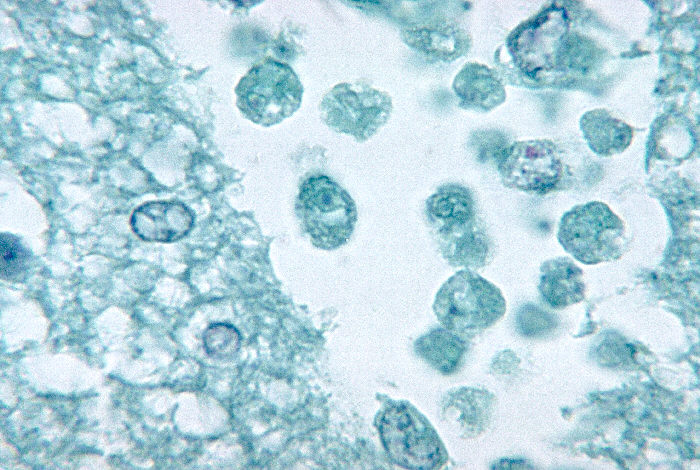In a follow-up to the report of an Ohio 18-year-old woman who contracted and died from the very lethal parasitic amoeba, Naegleria fowleri, officials with the Mecklenburg County Health Department in North Carolina and the Centers for Disease Control (CDC) held a press conference today to discuss the case.

Image/CDC
According to the early investigation into the case, Dr. Marcus Plescia, Mecklenburg County Health Department Director said the deceased may have been exposed at the U.S. National Whitewater Center in Charlotte.
She was in North Carolina during the time where infection and development of symptoms had occurred; however, as Plescia notes, “We don’t know for certain it was the Whitewater Center, we’re still trying to learn if they may have any other access to open water sources.”
Since 1962 in the US, 139 people have contracted the parasite and there have been only three survivors.
Naegleria fowleri (commonly referred to as the “brain-eating amoeba”), is a microscopic amoeba which is a single-celled living organism. It can cause a rare and devastating infection of the brain called primary amebic meningoencephalitis (PAM). The amoeba is commonly found in warm freshwater such as lakes, rivers, ponds and canals.
Infections can happen when contaminated water enters the body through the nose. Once the amoeba enters the nose, it travels to the brain where it causes PAM (which destroys brain tissue) and is usually fatal. Infections usually occur when it is hot for prolonged periods of time, which results in higher water temperatures and lower water levels.
Naegleria fowleri infections are rare. Most infections occur from exposure to contaminated recreational water. Cases due to the use of neti pots and the practice of ablution have been documented.
You cannot be infected with Naegleria fowleri by drinking contaminated water and the amoeba is not found in salt water.
Initial symptoms of PAM usually start within 1 to 9 days after infection. The initial symptoms may include headache, fever, nausea, or vomiting. Other symptoms can include stiff neck, confusion, loss of balance, seizures, and hallucinations. After the start of symptoms, the disease progresses rapidly.
Related:
- Amoeba awareness: Naegleria fowleri
- Amoeba awareness, part 2: Balamuthia
- Outbreak News Radio: Naegleria fowleri and amoeba awareness: Personal stories and the great work from ‘Kyle Cares’ and ‘Swim Above Water’


2 thoughts on “Brain-eating amoeba case update: Suspected it was contracted in Charlotte, North Carolina area”